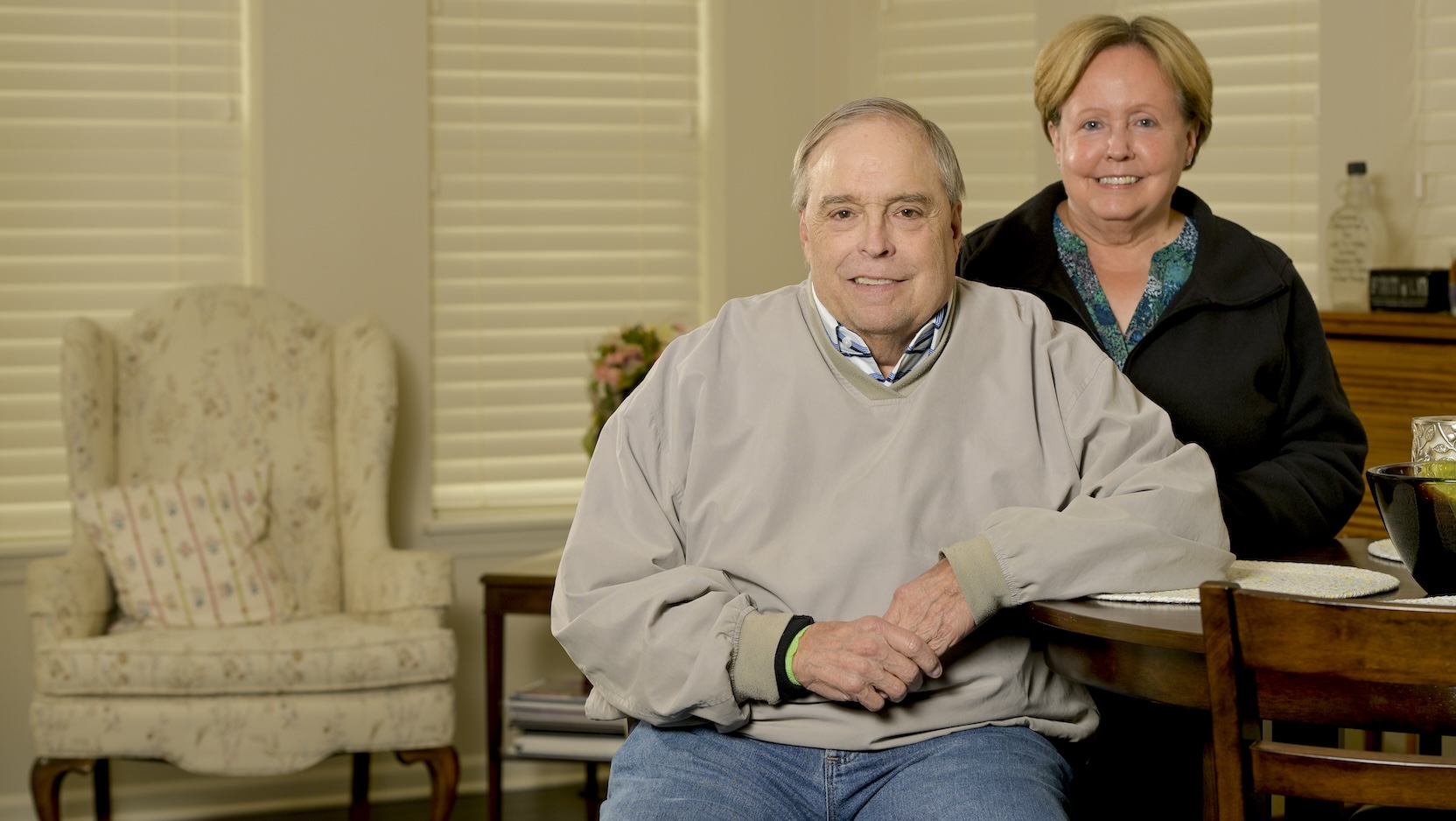How a smartphone-controlled spinal cord stimulator helps an avid golfer manage his neuropathy pain

After a successful heart and kidney transplant at the University of Chicago Medicine in 2022, Robert Knorr was able to resume his normal life of golf games and family trips.
But that came to a halt in 2024 when, unrelated to his transplant, he developed neuropathy — nerve damage that causes pain, tingling and numbness — in his legs and feet. The pain got so bad that Knorr needed a cane, and sometimes a wheelchair, to get around.
He tried neuropathy treatments such as physical therapy and different pain medications, including opioids. But the drugs caused bad side effects, including brain fog.
Knorr’s neurologist referred him to UChicago Medicine anesthesiologist and interventional pain management expert Joshua Pan, MD, who recommended a spinal cord stimulator to control his nerve pain.
How does a spinal cord stimulator work?
There are several types of spinal cord stimulators, but the one recommended to Knorr was a new (approved for use in late 2024) battery-operated device that’s about the size of an AirPods case.
It contains a small electric wire that sends signals to the spinal cord. Those signals interrupt abnormal, over-activity of pain messages being sent to the brain.
“It reprograms or scrambles some of those pain signals before they get to the brain, so the patient isn’t dealing with as much day-to-day pain,” Pan said.
The patient controls the pain relief level using an app on their cell phone. A communication device that controls the stimulator is attached to the back of the patient’s cell phone.
Knorr, a 69-year-old Naperville resident and retired oil company executive, gave the spinal cord stimulator a trial run in January 2025. It worked so well, he had a simple outpatient procedure to implant it into the side of his body a few weeks later.
“All I do is turn it on, push a button that says ‘connect,’ and it connects with the battery in my back and I can control my pain,” said Knorr, who uses the stimulator to ease the pain in his legs and feet. “I turn it up when I need it, and turn it down when I’m feeling fine.”
How spinal cord stimulators target neuropathy pain
Even though spinal cord stimulators have been around for decades, the technology has greatly improved in the past few years, allowing them to target specific sources of neuropathy pain.
The progress has prompted the Food and Drug Administration to approve spinal cord stimulators for more conditions, including Parkinson’s tremors, spinal disc bulges and spinal cord injuries, Pan said.
“There are different types of stimulation patterns they use now that can target different parts of the spinal cord,” he said.
The stimulators have a new feature called closed loop simulation that constantly monitors and self-adjusts the electric signals being sent to the spinal cord. (The patient can still manually override the device, Pan said.)
“The computer is constantly listening to what his spinal cord is doing, hundreds or thousands of times a second, just to make sure that it’s not giving too much electricity or too little electricity,” he said.
Who can benefit from spinal cord stimulators?
A spinal cord stimulator can help neuropathy patients as well as others experiencing pain in their arms, legs, feet and back.
“It’s a good option before patients consider opioid therapy, which has a lot of side effects: it can be addictive, cause constipation and respiratory problems, and patients can develop tolerance to them,” Pan said.
A stimulator is a great option for cancer patients with chemo-induced neuropathy, patients who continue to have pain after spine surgery, or patients with spine and leg pain who aren’t a good candidate for surgery.
“There’s a lot of research going on,” Pan said. “We're still understanding the limits of spinal cord stimulation. I don't think we’ve even gotten to the peak of what we use for neuromodulation, or the use of electricity to reprogram nerves.”

Happy with his progress
Today, Knorr is back on the golf course and making plans for a family trip to Canada where they’ll do some easy hiking – something that seemed unimaginable just a year ago.
“Technology saved me,” he said, also giving credit to his wife Susan's unwavering support and care. “I’m back doing everything I ever wanted to.”
UChicago Medicine is now offering spinal cord stimulators to more patients for a bigger range of pain conditions, Pan said. It certainly helped Knorr, whose health journey began at age 28, when he had his first heart attack, and culminated with his double transplant.
“I'm really happy with the progress he's made,” Pan said. “The transplant saved his life, but I think the spinal cord stimulator gave him the ability to enjoy his life. Making people’s quality of life better is one of the most rewarding aspects of being a pain medicine physician.”
For more information, call UChicago Medicine’s Department of Anesthesiology and Critical Care at 773-834-3531, and select Option 2.
Why Choose UChicago Medicine for Neurosurgical Care?
UChicago Medicine is devoted to the evaluation and treatment of diseases of the central nervous system. We use a full range of neuromedical and neurosurgical technologies to provide the most up-to-date and effective treatments for the entire spectrum of neurological disease.
Learn more about our neurosurgery program